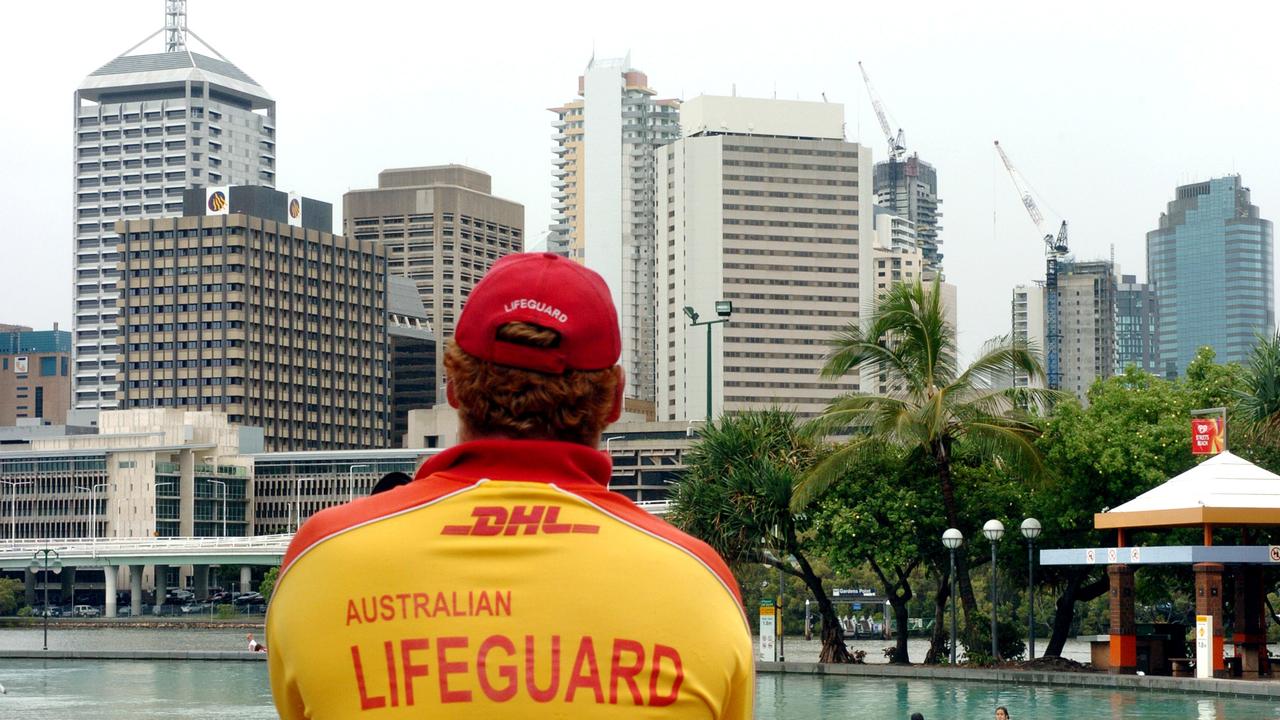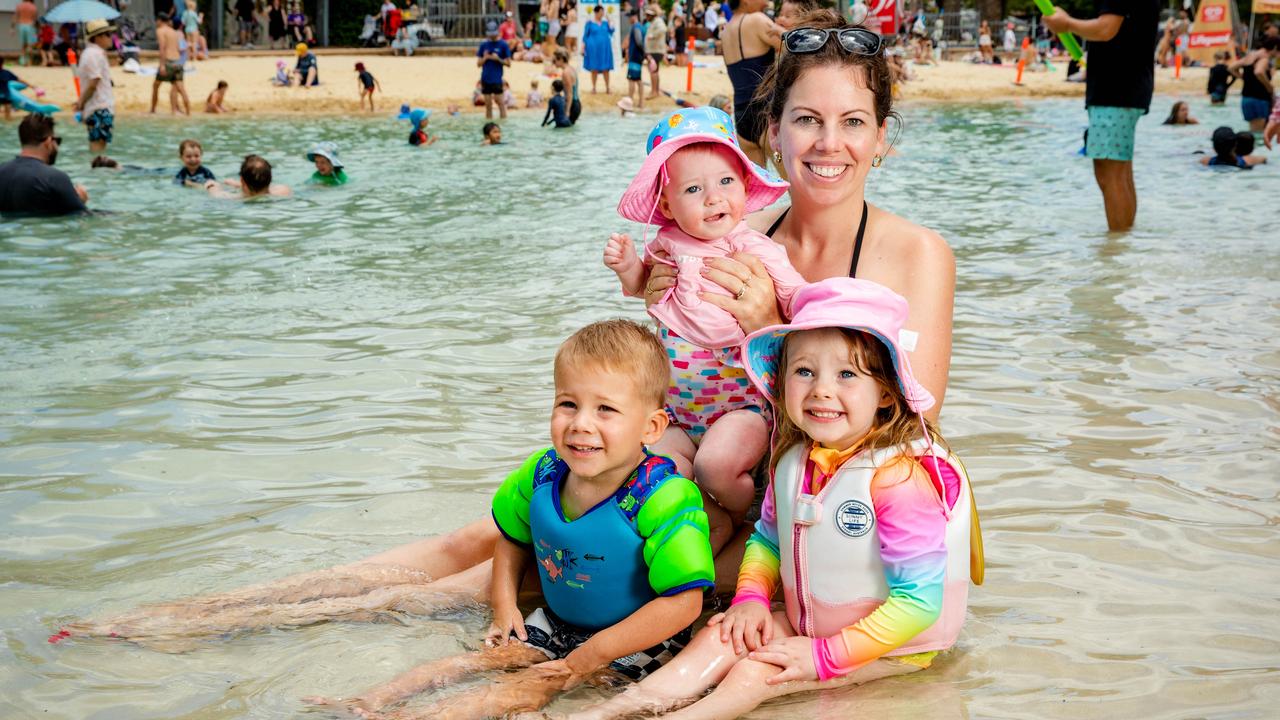Fewer pools, more drownings: Qld’s alarming stats laid bare
Queensland kids are falling short of swimming and water safety benchmarks as an alarming report reveals the stats on our pools, and our tragic child drownings.
Education
Don't miss out on the headlines from Education. Followed categories will be added to My News.
Queensland has 200 fewer public and private swimming pools than NSW and three times as many child drownings, as calls reignite for a statewide approach to swimming lessons in schools.
Experts fear regional communities are being left behind and say it is “unclear” whether all children are physically getting into a pool and learning survival skills as part of their lessons, or simply being instructed in the classroom.
A PricewaterhouseCoopers report commissioned by Royal Life Saving Australia found Queensland had 453 public and privately owned publicly accessible swimming pools, compared to 658 in NSW and 570 in Victoria and many people live more than 20 minutes from an aquatic facility.
The state is also lagging behind state counterparts in investment into swimming education, according to the report, sparking “generational drowning” fears for children from disadvantaged backgrounds
Royal Life Saving Australia general manager RJ Houston questioned how many children were actually learning to swim inside pools, as opposed to learning the basics in a classroom.
“It’s unclear whether all children actually get in the pool and learn survival skills in the water. Anecdotally we have heard that from the community,” Mr Houston said.
“The classroom education is a positive, but there needs to be a practical in-water component.”
Queensland has a population of about 5.3 million, less than NSW with 8.2 million and Victoria with 6.7 million, but has one of the lowest population percentages of people living within a 20-minute drive from an aquatic facility in the country.
SCROLL DOWN TO SEE THE STATS
Queensland’s drowning deaths from July 2021 to June 2022 spiked largely due to flooding, however of the state’s 84 deaths, 16 were aged 17 or under.
Comparatively, of the 125 drowning deaths in NSW, six were aged 17 or under while for Victoria’s 53 drowning deaths, six were aged 17 or under.
The report found Queensland had no subsidised learn-to-swim programs running during school holidays as an alternative to private swimming lessons, unlike Victoria, South Australia and Western Australia.
Mr Houston said while children in the South East were meeting swimming benchmarks, those in regional and rural areas with limited access to quality swimming pool infrastructure were far less likely.
Children of multicultural, Indigenous backgrounds, those with disabilities and those in lower socio-economics areas were at risk of missing out on learning the basics, he said.
Nationally, 40 per cent of children leave primary school unable to meet the minimum national standards for swimming and water safety skills.
“This is a critical concern. Queensland is a state that has a proud record of developing Olympic swimmers, but could be doing better to ensure all its kids get a fair go,” Mr Houston said.
Laurie Lawrence, who founded the Laurie Lawrence Swim School in 1966, also said not all Queensland children were physically learning to swim in water.
“That was being done in Queensland schools for a while. They were calling it water safety education and you assumed the students were learning in the pool, but in actual fact it was in the classroom,” Mr Lawrence said.

The former Australian coach called for a minimum of 10 swimming lessons to be part of the school curriculum and said all children should have access to lessons even if they couldn’t afford it.
“We have children who can swim 50m by four years old. If kids aren’t able to meet those benchmarks, it’s terrible. They are very low benchmarks in my opinion,” Mr Lawrence said.
“Everyone thinks Queensland is going great because we have a bunch of national swimmers. But if 40 per cent of kids aren’t able to swim 50m, are we really in a good shape?”
The state government did not respond when asked whether all Queensland children learnt to swim in pools.
A department of education spokeswoman said $3.7m was invested annually to support schools deliver swimming and water safety programs, and provide grants for schools without access to pools.
That announcement was made in 2018 following The Courier-Mail’s Save Our Schoolkids (SOS) campaign, which revealed a stark decline in swimming ability.
The department reviewed its water safety and swimming education regularly and would determine whether further updates were required with its revised Australian curriculum.
“Teaching our children to swim and be safe around water from an early age is important and schools play a key role once children are of school age,” the spokeswoman said.
“The program is regularly reviewed and the department always welcomes suggestions and feedback from engaged stakeholders.”

The spokeswoman said its water safety and swimming education program was used by all state schools, aligned to the national swimming and water safety framework and the Australian curriculum.
Grants of about $150,000 are available to eligible state schools without a pool or those located more than a kilometre away from a pool.

Coorparoo mother Kerri Hinton said swimming lessons were a must and encouraged other parents to enrol their children as soon as possible. Mrs Hinton said Rachel, 3, and Madeline, 8 months, started lessons from six months old and were slowly learning the basics.
“You have to watch out for your kids and make sure they’re close by,” she said.
“They do lessons every week. Water safety is paramount.”
A Department of Sport spokesman said support was provided to boost swimming participation through fair play vouchers and active club grants of up to $150 per child.
More than 140,000 vouchers have helped children participate in sport and recreation throughout the past three years.
WATER SAFETY FINDINGS
Minimum national benchmarks
● Swim continuously for 50m
by age 12
● Float or tread water for two minutes by age 12
Public facilities
NSW 445, Vic 290, Qld 285
Public accessible private facilities
NSW 213, Vic 280, Qld 168
Drownings
NSW 125 (6 children), Vic 53 (6 children), Qld 84 (16 children)
(Figures from July 2021 to June 2022)
Report findings
● Queensland has no subsidised Learn to Swim programs running during school holidays as an alternative to private swimming lessons, unlike Victoria, SA and WA.
● Queensland has “no consistent state-wide program” that ensured all students meet “crucial” swimming benchmarks, like floating or treading water for two minutes or swim a full 50m lap.
(Towards a water-loving nation free from drowning: The role of learn to swim report)






